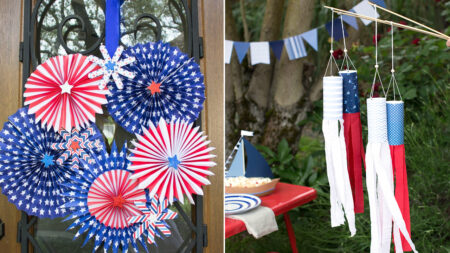On the map, Milan is roughly 1,300 km from London. It takes two hours by flight and about eleven hours by train to either side. The two cities speak different languages, dine on different cuisines, wear different attire, and for that matter even watch two separate football leagues. If there is one constant that connects the two places like ball-and-socket, it is the ‘cold conflict’ to be crowned the hot hub of design.
One could say, there is nothing more Italian than design, but Britain is slowly progressing to surpass its old rival. London Design Festival commenced in 2003 is a strong epitome of how the city wants to stand as an arch-rival to Salone del Mobile, an annual design event held in Milan. Over the years London is consistently earning recognition as a global design hub for various compelling reasons, including its proximity to European manufacturers and its high-quality design education.
But for design to travel from the streets of Salone to the lanes of London was no easy feat had it not been for the gumption of design-minded individuals like Tom Dixon and Jasper Morrison, the OGs of Industrial design in London. Taking over the reins from the former are now Edward Barber and Jay Osgerby, collectively known as Barber Osgerby. The design duo has amassed the status of being one of the most successful design studios, not just in London but in the whole of the United Kingdom.

“After completing a design degree at Leeds Polytechnic, I went on to study architecture at the Royal College of Art where Jay and I met. We both decided to venture into furniture but didn’t have the means to. We did have reels of white cards which we’d been using for our architecture models so used this to develop our ideas for early works – the material lent itself perfectly to laminated and sheet materials so you’ll notice a lot of our first projects are in laminated plywood or formed using aluminum steel,” Edward Barber tells us in an exclusive interview.

After early struggles, the duo went on to establish their design studio (presently Barber Osgerby ) in 1996 and struck international collaborations over the years. One would wonder that the duo has garnered praises and success for keeping up with the ever-evolving design trends, but that’s not the case. “We don’t adhere to trends; instead, we focus on creating new archetypes and modes of use for products,” the duo states.

Barber and Osgerby’s portfolio spans interior, furniture, lighting, and product design and extends to art and architectural-themed projects. The studio has designed furniture for design brands such as Vitra and Cappellini and lighting for Hermès and Louis Vuitton. While designing products for world-class manufacturers, the duo emphasizes on keeping things sustainable, which has been a secret of their success over the years.
“Sustainability is paramount in our approach, driving our industry forward. Careful consideration goes into selecting manufacturers based on expertise, material quality, craftsmanship, and a commitment to experimentation. As designers, we must scrutinize materials and shipping carbon footprints. It’s our responsibility to make things that are intelligently conceived and constructed,” the duo mentions.
Collaboration with the right manufacturers has also been the key to enhancing sustainability in both the design process and product lifespan. “The On & On chair, designed for Emeco, exemplifies this ethos, utilizing a material that can be perpetually reformed by the manufacturer,” the duo notes.

Despite the megastars they’ve become in the London design sphere, I won’t go on calling the British duo, ‘the pioneers of the design revolution in London’ nor would I go on hailing them as the trailblazers in the English design community. Barber Osgerby’s legacy is rather very different. It is something so hard to pen in words and describe via word of mouth, so when I asked the duo, how they want the people to remember them, “Producers of good design” was their subtle response.
And why not, good design is where form meets function, the system marries sustainability, and aesthetics elevates to new heights. And this is what Baber Osgerby has always aimed at. “Good design is something that focuses on utility and durability, constantly seeking innovative and improved approaches to tasks,” the duo states.
Today, folks around the world know this design duo as a British studio that is responsible for creating and developing collections for B&B Italia, Flos, Vitra, Cappellini, Swarovski, Venini, and Knoll. “Furniture design has opened up so many doors and we’re in a fortunate position where we’re able to meet with and work with interesting manufacturers globally experimenting with the latest materials and technologies,” Jay Osgerby tells us.

However, the studio’s work is not just limited to designing furniture. Occasionally they’ve ventured into the realms of fabric and product design, and collaboration with Levi’s, Coca-Cola, and Sony are examples of it. “We don’t have a set studio style but more of a design approach where we challenge boundaries. No project is alike – everything we do has a different context and so we naturally bring many new references to each,” states the duo.
Those who don’t have a knack for product and industrial design recognize the pair as designers of the London 2012 Olympic and Paralympic torch. They are known to blueprint the £2 coin commemorating the 150th anniversary of the London Underground in 2013. “It was an opportunity to represent the UK, in design terms, and we are incredibly proud to be doing so.”

Having amassed huge success over the years, both Edward Barber and Jay Osgerby chose to stay humble and hark back on the good old days when they were rookies and wanted to make a name for themselves. “We’ve both, from a young age, had a keen interest in making – in the 70s and 80s we watched children’s TV shows which encourage creativity and resourcefulness such as making objects out of discarded household objects – I’ve always had a respect for how objects are created. I undertook a year-long foundation course in art and design, then a degree in furniture and industrial design at Ravensbourne College of Design and Communication,” states Jay Osgerby.
Renowned for their unparalleled vision, Edward Barber and Jay Osgerby have become synonymous with cutting-edge design that transcends boundaries. Whether it is establishing their second studio (Universal Design Studio) in 2001 alongside their main one or expanding Barber Osgergy’s family of studios by introducing Map Project Office, a strategy-focused industrial design consultancy, the duo has done it all.
The grit, determination, and sheer passion of the two design stalwarts has landed them multiple global design awards and garnered acclaim as one of Great Britain’s finest studios. Both Edward Barber and Jay Osgerby are currently busy developing several new projects that will be unveiled during the 62nd edition of Salone del Mobile. But this doesn’t stop them from being referred to as the design darlings of London.
Follow Homecrux on Google News!




